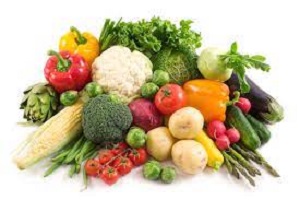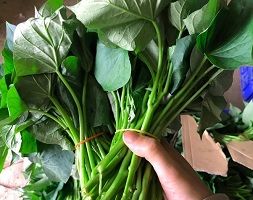Veggies ~ 20 Powerhouse Vegetables You Can Eat
Veggies ~ 20 Powerhouse Vegetables You Can Eat

Veggies, from leafy greens to cruciferous vegetables, are a gift from nature.
Vegetables, which are high in immune-boosting antioxidants, fiber, B vitamins, and minerals, can have a significant impact on your health.
In fact, numerous studies have linked the benefits of increased vegetable consumption to a lower risk of chronic diseases, such as heart disease, diabetes, and certain cancers.
Vegetables, which are high in fiber, vitamins, minerals, and antioxidants, are an absolute must in any healthy diet.
They’re also filling and flavorful, making them ideal for salads, soups, smoothies, and sandwiches.
In fact, when I’m feeling creative, I like to add a nutritious twist to dishes like pizza and pasta by piling on the vegetables and experimenting with new or interesting produce ingredients.
Although all vegetables are healthy, a few stand out for their high nutrient content and powerful health benefits.
What foods are in the Vegetable Group?
The Vegetable Group includes any vegetable or 100% vegetable juice.
Raw or cooked vegetables can be fresh, frozen, canned, or dried/dehydrated, and they can be whole, cut up, or mashed.
Vegetables are classified into five subgroups based on their nutrient content: dark green, red, and orange, beans, peas, lentils, starchy, and other vegetables.
How many vegetables do you need?
The amount of vegetables you should consume is determined by your age, gender, height, weight, and level of physical activity. The amount can also vary depending on whether you are pregnant or breastfeeding.
Why is it important to eat vegetables?
Eating vegetables has health benefits — people who eat more vegetables and fruits as part of a healthy diet are less likely to develop certain chronic diseases.
Vegetables provide nutrients that are essential for your body’s health and maintenance.
Health Benefits of Eating Veggies
All food and beverage choices are important; consider variety, quantity, and nutrition.
- As part of a healthy overall diet, eating vegetables with fewer calories per cup instead of a higher-calorie food may be beneficial in lowering calorie intake.
- Consuming a diet high in vegetables and fruits as part of a healthy overall diet may lower the risk of heart disease, including heart attack and stroke.
- Consuming some vegetables and fruits as part of a healthy diet may protect against certain types of cancer.
- Including vegetables can help increase fiber and potassium intake, which are important nutrients that many Americans do not get enough of.
Veggies Nutritional Value ~ Nutrients
Most vegetables are low in fat and calories by nature. (Sauces and seasonings can increase fat and calories.)
Many nutrients are found in vegetables, including potassium, dietary fiber, folate, vitamin A, and vitamin C.
Potassium-rich diets may aid in the maintenance of normal blood pressure.
Sweet potatoes, white potatoes, white beans, tomato products (paste, sauce, and juice), beet greens, soybeans, lima beans, spinach, lentils, kidney beans, acorn squash, kohlrabi, and yucca are all potassium-rich vegetables.
As part of a healthy diet, dietary fiber from vegetables helps lower blood cholesterol levels and may reduce the risk of heart disease.
Vitamin A protects the eyes and skin from infection by keeping them healthy.
Vitamin C aids in the healing of cuts and wounds, as well as the maintenance of healthy teeth and gums. It also facilitates iron absorption in the body.
Vegetables and Fruits
- Vegetables and fruits are essential components of a healthy diet, and variety is just as important as quantity.
- No single fruit or vegetable contains all of the nutrients required for good health. Every day, eat a lot.
A diet high in vegetables and fruits can lower blood pressure, lower the risk of heart disease and stroke, prevent certain types of cancer, lower the risk of eye and digestive problems, and have a positive effect on blood sugar, which can help control appetite.
Non-starchy vegetables and fruits, such as apples, pears, and green leafy vegetables, may even help you lose weight.
Their low glycemic indexes prevent blood sugar spikes, which can cause hunger.
There are at least nine different fruit and vegetable families, each with hundreds of different plant compounds that are beneficial to health.
Consume a variety of product types and colors to provide your body with the nutrients it requires.
This not only ensures a greater variety of beneficial plant chemicals but also results in more visually appealing meals
In this article, we’ll list 15 of the most healthful nutrient-dense veggies available
- Spinach
- Kale
- Broccoli
- Peas
- Sweet potatoes
- Beets
- Carrots
- Fermented vegetables
- Tomatoes
- Garlic
- Onions
- Alfalfa sprouts
- Bell peppers
- Cauliflower
- Seaweed
- Turnips
- Asparagus
- Green Beans
- Beet Greens
- Watercress
- Swiss Chard
- Collard Greens
Summary
Eating vegetables on a daily basis is beneficial to one’s health. They contain vitamins, minerals, and other nutrients such as antioxidants and fiber.
People who eat at least 5 servings of vegetables per day have the lowest risk of many diseases, including cancer and heart disease, according to research.
Consume a variety of vegetables on a daily basis to reap the greatest number of health benefits.
People also ask
What are the top 8 veggies?
- This leafy green tops the chart as one of the most nutrient-dense vegetables. …
- Carrots are packed with vitamin A, delivering 119% of the DV in just 1 cup (128 grams)
- Green peas.
- Swiss chard.
- Broccoli
- Garlic
- Brussels sprouts.
- Kale
What are 10 examples of vegetables?
Types of vegetables
- Leafy green – lettuce, spinach, and silverbeet.
- Cruciferous – cabbage, cauliflower, brussels sprouts, and broccoli.
- Allium – onion, garlic, and shallot.
- Marrow – pumpkin, cucumber, and zucchini.
- Root – potato, sweet potato, and yam.
- Edible plant stem – celery and asparagus.
What veggies should I eat every day?
Here are 12 of the best vegetables to eat daily for a healthy lifestyle:
- Some of the best vegetables to incorporate into your everyday diet are leafy greens.
- Brussel Sprouts.
- Sweet Potatoes.
- Mushrrooms
- Carrots
- Broccoli
- Asparagus
- Beets
What is the healthiest veggie?
The most healthful vegetables?
- Spinach
- Kale is a very popular leafy green vegetable with several health benefits.
- Beets
- Carrots
- Peas
- Broccoli
- Sweet potatoes.
- Fermented vegetables.
What veggies are best for weight loss?
The Best Vegetables to Eat When You’re Trying to Lose Weight
- Spinach – It’s lower in calories, packs a nutritional punch, and is versatile to use in all sorts of recipes,” says Davjee.
- Brussels sprouts.
- Green peas.
- Cauliflower
- Broccoli
- Spaghetti squash.
- Sweet potato.
What are examples of root vegetables? What are all vegetables’ names?
Leafy Vegetables
- Cabbage
- Arugula
- Lettuce
- Coriander leaves.
- Mint
- Spinach
- Celery
- Spring onion.
Can I see a list of vegetables?
Celery, kohlrabi, asparagus, hearts of palm, bamboo shoots, and rhubarb are examples of stem vegetables.
What are some leaf vegetable examples?
Kale, spinach, lettuce, chard, beet greens, bok choi, endive, arugula, watercress, and radicchio are examples of leaf vegetables.
What are English vegetables?
Vegetable Names in English
- Carrots
- Broccoli
- Eggplant
- Green pepper.
- Asparagus
- Cauliflower
- Corn
- Cucumber
What are the 5 types of vegetables?
Vegetables are classified into five subgroups based on their nutrient content: dark green, red, and orange, beans, peas, lentils, starchy, and other vegetables.
What are the 4 major vegetable types?
There are many different types of vegetables, but the four most common are root vegetables, cruciferous vegetables, greens, and nightshades.
What are the best vegetables for the skin?
Beta-carotene, which is found in orange fruits and vegetables like carrots, sweet potatoes, and pumpkins, and lutein, which is found in kale, papaya, and spinach, are both essential for normal skin cell development and healthy skin tone
What veggies are high in protein?
High-Protein Vegetables, Ranked from Highest to Lowest Protein:
- Green Peas. 1 cup: 8.6 g protein
- 1 cup: 4.8 g protein.
- Brussels Sprouts. 1 cup: 4 g protein.
- 1 cup: 4 g protein
- 1 cup: 3.5 g protein
- Sweet Corn. 1 cup: 4.7 g protein.
- 1 cup: 4.6 g protein
- 1 cup: 4.3 g protein.
Classification of Veggies
- Onion, Garlic, Leek.
- Eggplant, Capsicum, Tomato, Pumpkin, Cucumber, Fuzzy melon, Muskmelon.
- Cauliflower, Broccoli, Broccoflower
- Root and Tubers. Carrot, Radish, Turnip, Beets, Potato, Sweet potato.
- Asparagus, Kohlrabi, Rhubarb.
- Cabbage, Kale, Lettuce, Spinach
- Seeds
How many vegetables are there in total?
How Many Vegetable Varieties Exist? According to a recent study conducted by Biodiversity International scientists, there are 1097 vegetable species cultivated worldwide.
What are the 9 vegetable classifications?
Are all fruits vegetables?
Fruits and vegetables are classified botanically based on which part of the plant they come from.
A fruit develops from a plant’s flower, while the plant’s other parts are classified as vegetables.
Fruits have seeds, whereas vegetables can have roots, stems, and leaves.

